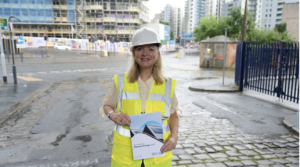To merge or not to merge – new website helps charities decide
 The Institute for Voluntary Action Research (IVAR) has launched a free resource for small charities and community organisations to help them navigate the changing funding landscape.
The Institute for Voluntary Action Research (IVAR) has launched a free resource for small charities and community organisations to help them navigate the changing funding landscape.
Bringing together case studies from its 17 years of working with voluntary, public sector organisations and funders, the new microsite hopes to enable leaders of organisations to make informed and confident decisions about their future.
It helps charities to answer the following questions:
- Is merger the right ‘survival strategy’ for your organisation?
- How do you decide what to prioritise when everything is important?
- What works for setting up cross-sector working?
- What is core funding, and how do you know if you are ready to apply for it?
The website is designed with time-poor chief executives and trustees in mind, with useful, usable insights that are quick to find and digest.
The section on mergers includes two short films, which tell the story of how the leaders of the North Yorkshire and York Forum and Rural Action Yorkshire took the decision to merge. Staff at the two organisations share their experience of what merger feels like and what has changed six months on. Lawrence Simanowitz, a partner at Bates Wells Braithwaite, also shares his advice for merger.
In the section on strategy and planning, IVAR associate and trustee Dr Sam Brier lays out a process for reviewing an organisation’s strategy, saying ‘This is about the big decisions. The ones that keep you up at night but also get you out of bed each morning’. The leaders of IDEAL Community Action and Spotlight UK share their experience of undertaking a strategic review.
As cross-sector collaboration increasingly takes centre stage, IVAR has gathered ideas on why it’s worth the effort and how to make it a success from the public and voluntary sides of the fence.
Professor Mark Pietroni, director of Public Health, south Gloucestershire, says, ‘Working with the voluntary and community sector is a great way to deliver local solutions in the areas in which people live in the ways that they want.’
And the section on core funding highlights the fact that, through all of IVAR’s work, it has come to the conclusion that core funding is essential for the wellbeing of small voluntary and community organisations. It shares its ideas on what core funding is, why it’s worth pursuing and ideas that may be useful when considering how to make the case.
Ben Cairns, director of IVAR, said, ‘We want to support the small, voluntary and community organisations that we’ve been working with since 2000. As our reports are often written for funders, lessons for the voluntary sector can get lost. Here, we’ve presented them in a way that we hope is useful to senior people with little time.’
Leah Swain, chief executive of Community First Yorkshire (formed by the merger of two North Yorkshire charities), said ‘The decision to merge is not one to be taken lightly but the final results can far outweigh the challenges. I hope that the experiences we have shared on the IVAR website give a taster of the highs and lows involved with the process. Having a free online resource like this will, I’m sure, help organisation leaders with the important and complex decisions they need to make.’















